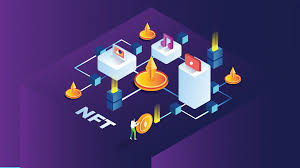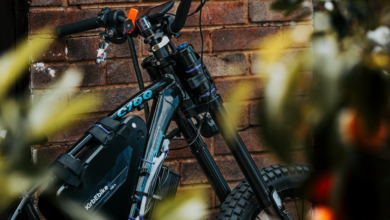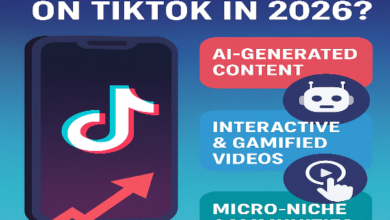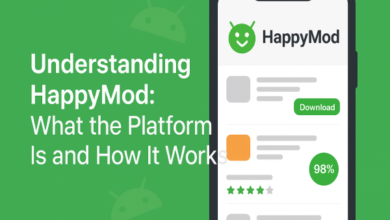NFT Art Marketplace Development: How to Implement

The arrival of NFTs on the art scene was nothing short of a revolution. For decades, digital artists faced a fundamental problem: how do you prove ownership and scarcity of a work that can be infinitely duplicated with a simple copy and paste? NFTs provided an elegant solution. By creating a unique, non-fungible token on a blockchain linked to a piece of digital art, it became possible to establish a verifiable chain of custody and ownership for the very first time.
This technological breakthrough unlocked a vibrant new market for digital creation, turning struggling artists into overnight millionaires and creating a new class of digital art collectors. At the center of this new ecosystem is the NFT art marketplace. It is the digital gallery, auction house, and community forum all rolled into one. While platforms like Foundation, SuperRare, and OpenSea have blazed the trail, the opportunity to create new, innovative, and curated spaces for art is far from over.
But how do you actually build one? The process of NFT marketplace development for art is a complex interplay of user experience design, backend engineering, and highly specialized blockchain programming. It requires a deep appreciation for both aesthetics and security. This guide will provide a practical, step-by-step roadmap for implementing your own NFT art marketplace, from initial strategic choices to the final deployment.
Phase 1: The strategic foundation
Before you dive into the technical aspects, you must make several high-level strategic decisions that will define your platform’s identity and direction. Rushing this phase is a common mistake that leads to building a platform nobody wants to use.
Determine your niche and curation model
Are you building a marketplace for everyone, or a specialized gallery? A broad, open marketplace like OpenSea allows anyone to mint and sell, leading to high volume but also a lot of noise and low-quality content. A curated marketplace, like SuperRare, is invitation-only. This results in a much higher standard of art, attracting serious collectors, but it also limits your scale.
Phase 2: Design and user experience (UI/UX)
An art marketplace must be beautiful and intuitive. Collectors and artists are visually-minded people, and a clunky or ugly interface will be an immediate turn-off.
Focus on a clean, visual-first layout
The art should be the star of the show. Use a minimalist design with plenty of white space that allows the artwork to stand out. The homepage should feature curated collections, trending artists, and recently sold pieces to create a sense of activity and discovery.
Design intuitive creator tools
The minting process for artists should be self-explanatory. Create a simple upload form where they can provide their artwork file, title, description, and set their royalty percentage. This is a critical flow to get right if you want to attract top talent to your platform.
Phase 3: The technical implementation roadmap
This is where your vision is translated into a functional product. The development is typically split into three main areas: the frontend, the backend, and the smart contracts.
Backend development
The backend server is the brain of your off-chain operations. It will handle tasks like user authentication, storing profile information, managing artwork metadata before it is minted, and providing data to the frontend through APIs. You might use technologies like Node.js, Python, or Go for your backend. You will also need a database (like PostgreSQL or MongoDB) to store this off-chain data.
Smart contract development
This is the most critical and specialized part of the process. Your smart contracts are self-executing programs that live on the blockchain and govern all the core logic of your marketplace. A mistake here can lead to catastrophic financial loss. You will typically need several main contracts.
Frontend development
The frontend is everything the user sees and interacts with. It is built using modern web development frameworks like React or Vue.js. The frontend’s primary job is to present the data from your backend and to communicate with the blockchain. This is done using libraries like Ethers.js or Web3.js.
Phase 4: Security, testing, and deployment
Once the components are built, they need to be rigorously tested and secured before launch.
Third-party security audit
Before deploying your smart contracts to the mainnet, they must be audited by a reputable third-party security firm. Auditors will comb through your code line by line, looking for vulnerabilities like re-entrancy attacks, integer overflows, and other common exploits. This step is non-negotiable and is essential for building user trust.
Comprehensive testing
Test every user flow on a testnet (a replica of the blockchain with no real money involved). Test the minting process, different auction types, royalty payments, and edge cases. Ensure your frontend handles network errors and transaction delays gracefully.
Building an NFT art marketplace is a formidable task, but it is also an incredibly rewarding one. It sits at the intersection of culture, technology, and finance. By focusing on a specific niche, prioritizing a beautiful user experience, and investing heavily in the security of your smart contracts, you can create a platform that not only functions flawlessly but also contributes meaningfully to the future of digital art, empowering artists and collectors around the globe.



